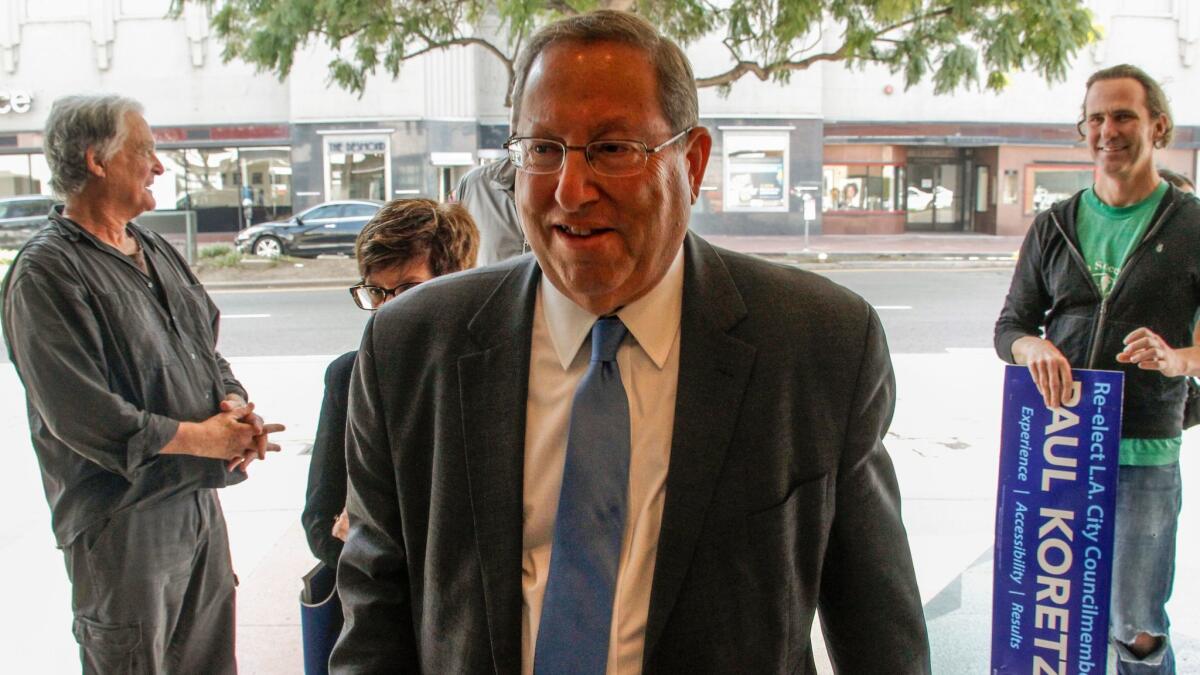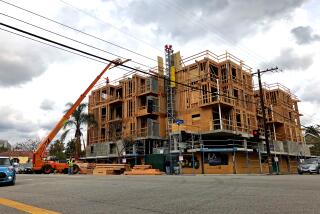L.A. lawmakers finalize new measures to curb ‘mansionization’

- Share via
The Los Angeles City Council approved a package of new measures Wednesday to rein in mansionization, the long-debated phenomenon where large homes are built on older streets with comparatively small lots.
Council members unanimously rewrote two ordinances that regulate the size of new homes on hillsides and in single-family neighborhoods.
The changes were backed by Councilman Paul Koretz, who is running for a third term in Tuesday’s election. Koretz’s 5th District includes neighborhoods that have been incensed over the tearing down of historic homes and the construction of larger replacement houses.
“The giant, boxy homes we’ve seen throughout Council District 5 will not be permittable any longer,” he said.
The mansionization measures will reduce the size of homes allowed in most single-family residential areas. For example, in some locations, the measure will scale back the square footage allowed for houses to 45% of the overall lot, down from 50%.
Lawmakers also stripped the existing law of key provisions that have allowed property owners to obtain additional square footage for their new home projects.
Activists from a handful of neighborhoods applauded the vote, complaining that owners of towering homes infringe on the privacy of people next door. “The city has responded to a grass-roots movement,” said Robert Eisele, vice president of the La Brea Hancock Homeowners Assn.
Still, some who attended the council meeting complained that many homeowners have been left in the dark on the new restrictions. And a trio of neighborhood groups contend the law also includes a new exemption for property owners who want to get around the size restrictions.
Under the ordinance approved Wednesday, property owners could seek to circumvent the new restrictions by applying for a conditional use permit, a document that takes extra time and money to obtain, said Doug Carstens, an attorney for the Sunset Coalition and two other organizations.
“They went through all this time and effort to satisfy neighborhoods and protect people, but at the same they’ve included a huge loophole that goes a long way toward undoing those protections,” he said.
Carstens warned council members that the exemption had not been properly vetted as required under the California Environmental Quality Act. He said that his clients may sue if the council fails to make a technical correction to the law removing the exemption.
Twitter: @DavidZahniser
More to Read
Sign up for Essential California
The most important California stories and recommendations in your inbox every morning.
You may occasionally receive promotional content from the Los Angeles Times.











